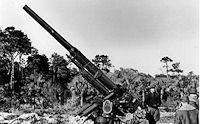 The Battle and Siege, 8-23 December, 1941
The Battle and Siege, 8-23 December, 1941
By John Dudek @ The Wargamer
Amidst the bursting, flashing Japanese shell fire explosions of the pre-invasion naval bombardment impacting around Wake island that late December 1941 night, Second Lieutenant Robert M. Hanna, commander of the antiaircraft machine-guns of the beach defense, could hear the ever growing sound of many approaching ship and boat engines offshore. Two of Wake Island’s huge 8-million candle arc 60-inch search lights snapped on, their brilliant lights turning darkness into day while clearly showing two destroyers headed at high speed directly towards the island’s coral reef shore. In addition, other landing craft filled with men were heading towards nearby Wilkes Island. This confirmed all of Hanna’s worst fears and suspicions. He now knew what was about to occur and shouted to his men. “I need four volunteers! You, you, you and you! Come with me!” Corporal Ralph Holewinski and three civilians ran alongside their officer towards a nearby unmanned 3-inch anti-aircraft gun that had been recently emplaced there to cover the beach. Hanna intended to use it in a direct fire role upon the destroyers that were now noisily running themselves hard aground upon Wake’s coral reef. There were no sights on the cannon, so after prying open a box of ammunition, Hanna sighted in on the nearby ex-destroyer by looking down his gun’s bore as he aimed at the ship’s superstructure up forward. The closest ship was well less than 200 yards away, but clearly defined in the searchlight’s brutally brilliant glare. The gun spoke and his first round was high, but he corrected his aim and the second ripped into the ship’s bridge, badly wounding its captain and navigation officer. Hanna went on to score more direct hits on the grounded ship’s superstructure followed by dozens more along its entire length, turning it into a slaughterhouse.

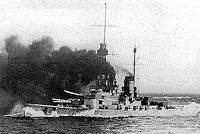 The Scarborough Naval Raid, December 1914
The Scarborough Naval Raid, December 1914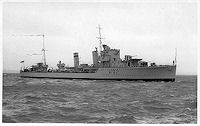 The David vs. Goliath naval battle between destroyer HMS Glowworm and the heavy cruiser Admiral Hipper
The David vs. Goliath naval battle between destroyer HMS Glowworm and the heavy cruiser Admiral Hipper The Canadian – American 1st Special Service Force
The Canadian – American 1st Special Service Force Murray Walker OBE opens The Tank Museum’s latest exhibition, ‘Fury’
Murray Walker OBE opens The Tank Museum’s latest exhibition, ‘Fury’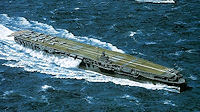 Concluding part of our series on Japanese aircraft carrier operations in early WWII
Concluding part of our series on Japanese aircraft carrier operations in early WWII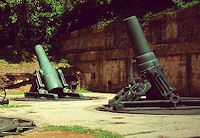 The Siege of the Fortified Islands of Manila Bay 1942
The Siege of the Fortified Islands of Manila Bay 1942 The Battle of Ypres Autumn 1914
The Battle of Ypres Autumn 1914